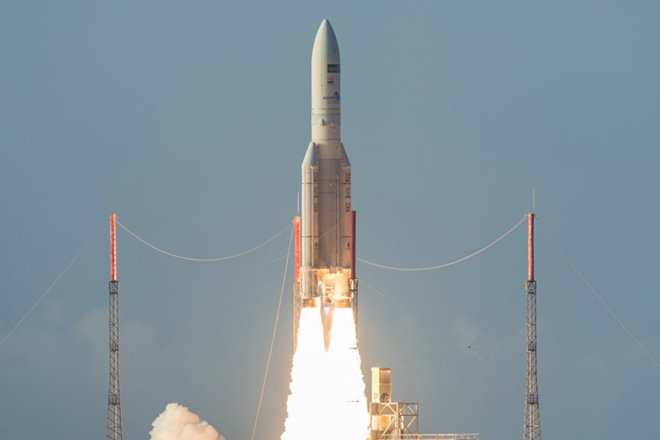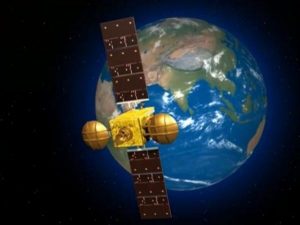

India’s Communication satellite GSAT-18 was successfully launched from the European spacepad of Kourou in French Guiana on Thursday, 6 0ctober 2016.
GSAT-18, built by the Indian Space Research Organisation (ISRO), aims at providing telecommunication services by strengthening the space agency’s current fleet of 14 operational telecom satellites.
“GSAT-18 successfully launched by Ariane-5 VA-231 from Kourou, French Guiana,” ISRO said.
GSAT-18 is designed to provide continuity of services on operational satellites in C-band & Ku-bands.
GSAT-18, built by the Indian Space Research Organisation, aims at providing telecommunications services for the country by strengthening Isro’s current fleet of 14 operational telecommunication satellites.
14 operational telecom satellites was launched into a Geosynchronous Transfer Orbit (GTO) about 32 minutes after the lift-off.

While most of India slept, the blue skies above the rainforests of French Guiana in South America, where the French spaceport is located, lit up as the giant Ariane 5 rocket thundered into the sky a little before sundown.
After a delay of a day due to bad weather, the massive European rocket lifted off into the sky over the equator and placed India’s heavy satellite GSAT-18 into space about half-an-hour later.
The communications satellite, weighing a huge 3.4 tonnes, will help boost banking and television services.
With the launch, the 52 meter high and 777 tonne heavy Ariane 5 rocket completed its 74th consecutively successful launch.

Dr A S Kiran Kumar, Chairman, ISRO called it a “flawlessly spectacular and magnificent launch”.
“India has had a long co-operation with Ariane starting with our Ariane Passenger Payload Experiment (APPLE) in 1981. Today ISRO has capability of putting only 2.2 tonne-satellites into orbit and hence we come to Kourou and Ariane for putting higher capacity satellites,” he said.
ISRO’s Master Control Facility (MCF) at Hassan in Karnataka took over the command and control of GSAT-18 immediately after its separation from the launch vehicle. Preliminary health checks of the satellite showed all systems were fine.
Carrying 48 transponders, the GSAT-18 satellite boosts India’s communication capabilities.
According to ISRO, in the coming days, orbit-raising manoeuvres will be performed to place GSAT-18 satellite in a Geostationary Orbit – 36,000 km above the equator – so that it stays locked on to a specific point of the Earth’s surface.
Later, it is planned to experimentally turn on the communication payloads of GSAT-18. After the successful completion of the in-orbit tests, GSAT-18 will be ready for operational use.
The Prime Minister, Shri Narendra Modi has congratulated ISRO on the successful launch of India’s communication satellite, GSAT-18.
“Congratulations to ISRO for successfully launching the communication satellite, GSAT-18. This is another milestone for our space programme”, the Prime Minister said.
